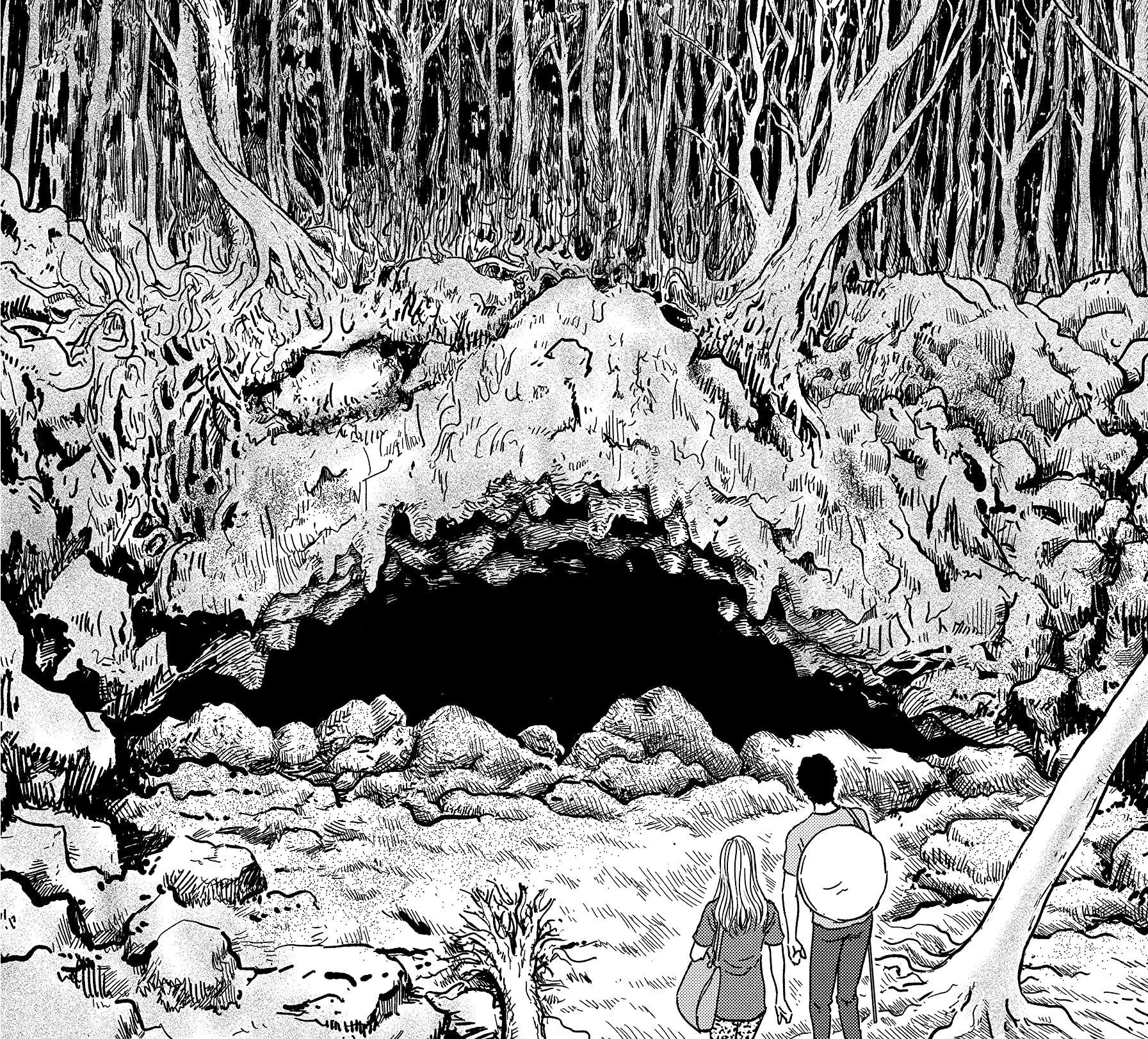Let's start with the obvious. The count of horror is not this has been Dracula but the Japanese Junji Ito as proven by several collections published by Mangetsu. It is not the new volume, the Phantom Zone, that will contradict us.
Varied areas of the supernatural
Mangetsu continues his magnificent compilations of the works of Junji Ito. The edition is always exceptional with a solid cover covered with a beautiful jacket highlighting the title. As in every volume, the reader benefits from Morolian's analysis at the end of the book and a preface, here by Mad Movies journalist Fausto Fasulo. However, unlike the previous volumes, Ghost Zone is a collection of unpublished material.
Ghost Zone brings together three horror short stories and a longer story by writer and artist Junji Ito. These different sizes are adapted to the narrative and no longer to editorial constraints. Indeed, these short stories were first published online and therefore without format constraints. In Le coteau aux pleureuses, a couple makes a trip shortly before their wedding and decides to make an improvised stop in the train station of a country village. They are intrigued by a woman's screams of pain at a funeral. This sight triggers in the future wife a crying crisis that never ceases. How to explain this scientifically impossible phenomenon?
In Maudite Madonna, the Catholic boarding school of the Institute of Good Faith gathers en masse for Mass. This school is a breeding ground for the political elite. However, clues quickly show the reader that behind the prosperity of the girls' school lies a cruel reality. We discover it by following the new student Maria Amano. Students are cut off from the world by a wall and a discipline frames each gesture. The headmistress terrifies young girls with her aggressiveness and disproportionate punishment. Students and teachers have a depressive attitude. Maria discovers that the director and his wife are conducting a very intense cult to Jesus' mother, but its operation reveals many secrets. In The Spectral River of Aokigahara, a man with an incurable disease travels with his girlfriend to a forest near Mount Fuji. They discover a line of strange white trees towards a river of ghosts with ambiguous powers… Lethargy follows a law student whose nightmares lead him to believe he is a serial killer. Is he really killing during his dreams or is he going crazy?
The same scary atmosphere
In these four short stories by Junji Ito, we find places well known to horror stories: abandoned natural spaces (a swamp), enclosed places (such as the girls' boarding school). All these territories are supposed to be very safe. Yet evil is there.
At Junji Ito, we are not in the gore because blood is often scarce. The fear is not immediate. Often, an innocuous or mundane event causes a chain reaction that causes individuals to fall into the strange, the horror and the paranormal. The feeling of fear gradually rises. This rise in tension sometimes comes from an external look through drawing. Many pages are both splendid and scary. Ito plays on textures to show the difference between the real and the supernatural. The tense expressions of the faces and the compositions are very accurate and serve direct images but without any second degree. We don't laugh at fear but we show it.
Junji Ito not only gives goosebumps but also delivers life lessons. The horror comes from legends poorly located in the past. As in the historical series Butterfly Beast, Catholicism is a mystery to the average Japanese. But, at the same time, Le coteau aux pleureuses installs a new place for mourning in modern Japanese society cut off from traditions. To think of the dead is also to give a key to live. Not all news is as crystal clear as The Spectral River of Aokigahara offering a very open conclusion.
If you liked Junji Ito's short stories, rush to this volume. Not only are the stories as good but the drawing is much finer than before. The inking is less charcoal. On JustFocus, we are not afraid to return to dark places as evidenced by the chronicles on Frankenstein and a collection of short stories by Junji Ito.















![[Live Report] Rock En Seine 2024 : 20 ans et toujours aussi passionnés !](https://www.justfocus.fr/wp-content/uploads/2024/11/RES24_JOUR01_LANA-DEL-REY_LOUIS-COMAR-12.jpg)























